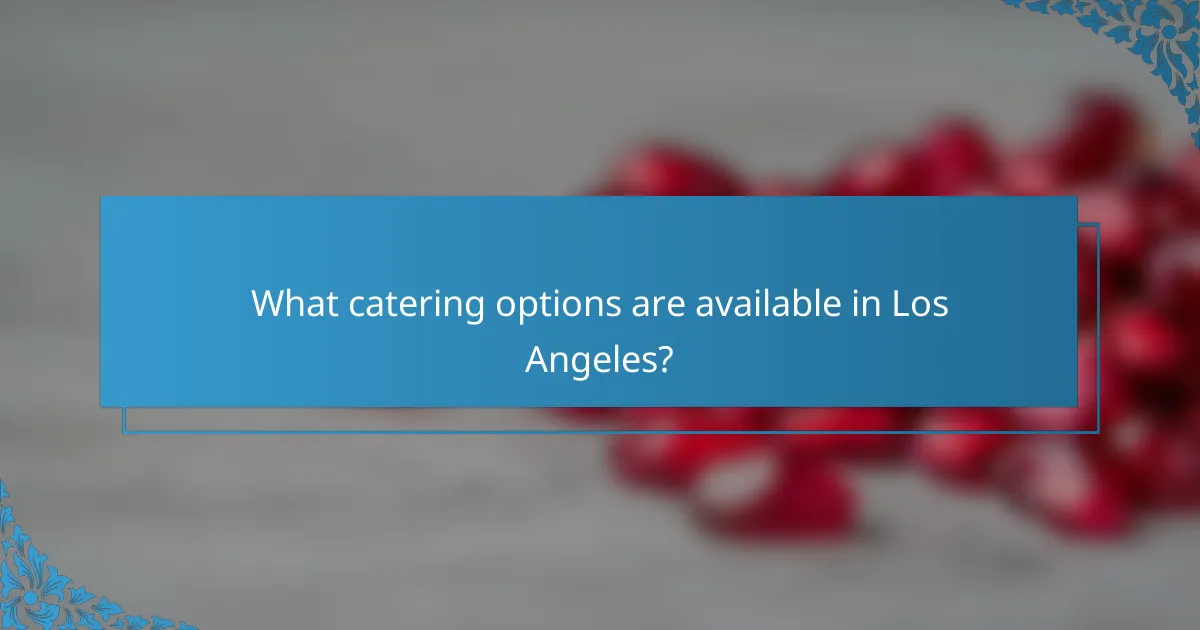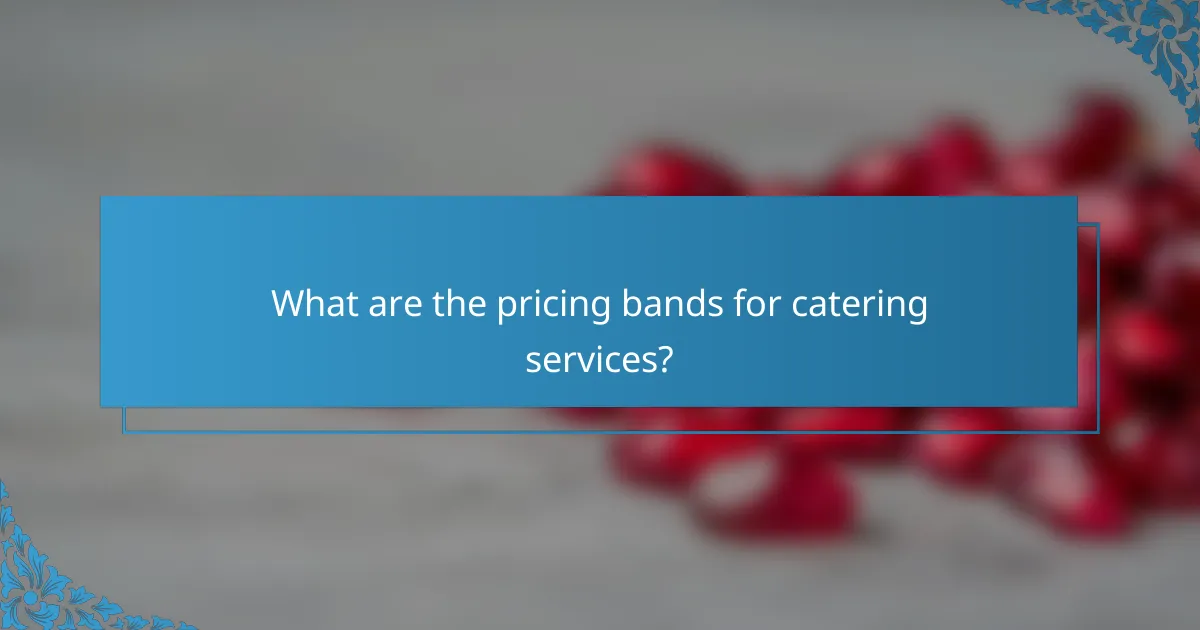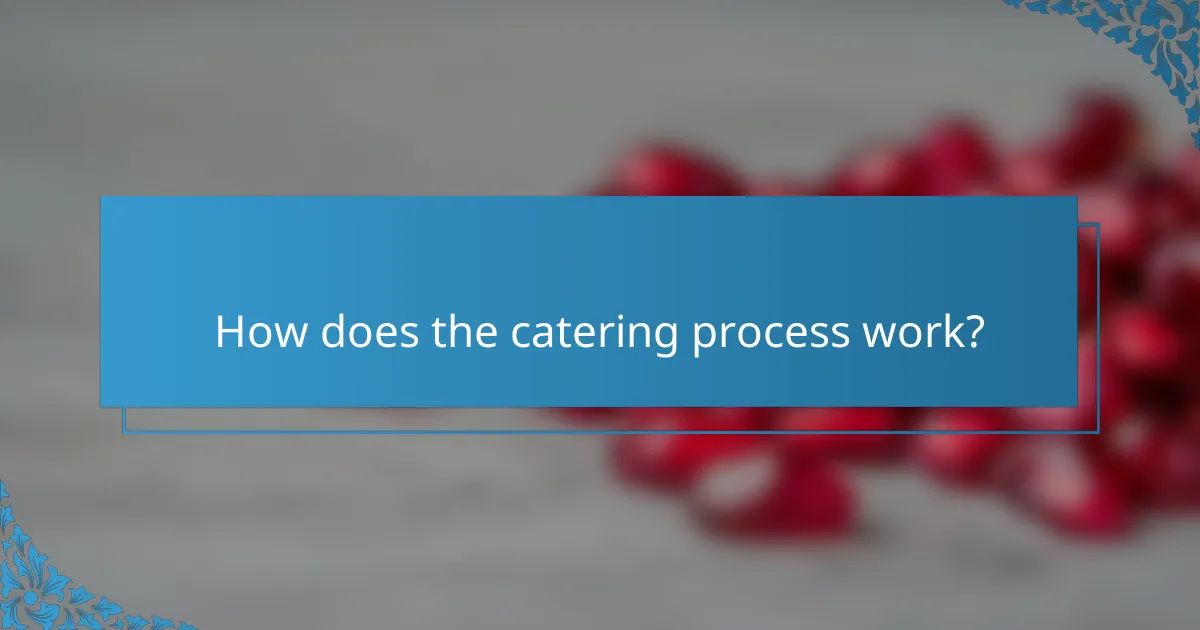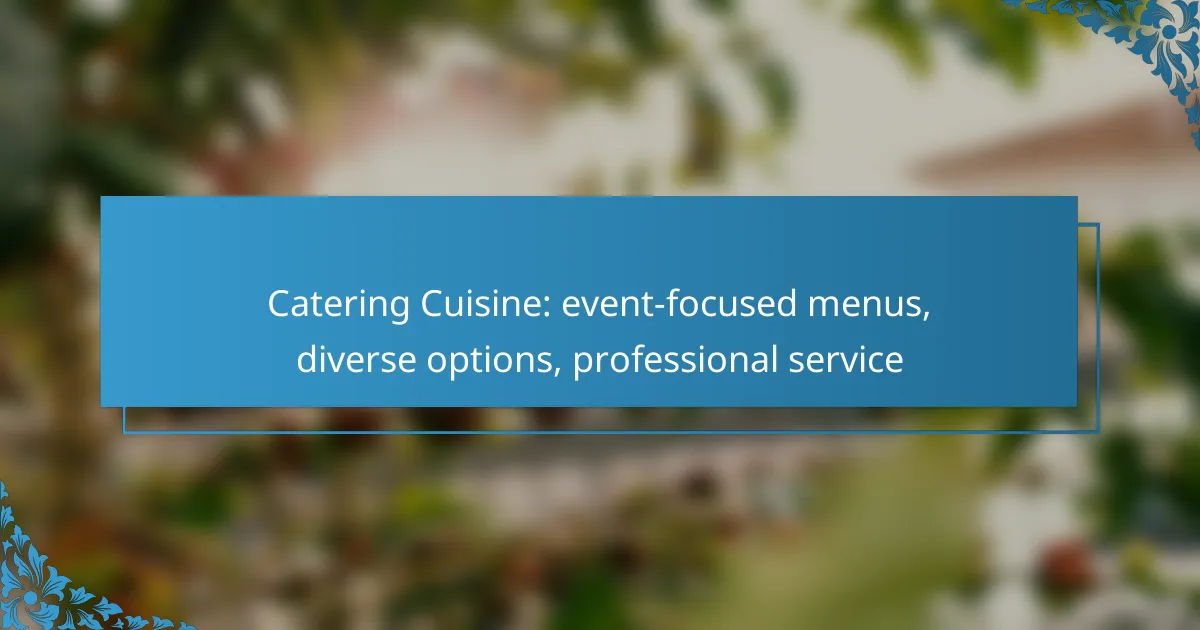When planning an event, selecting the right catering service is essential to create a memorable experience for your guests. With a diverse range of menu options available, from buffet-style to plated meals, you can tailor your catering to fit the occasion and your guests’ preferences. Professional service and attention to detail will ensure that your event runs smoothly, allowing you to focus on enjoying the celebration.

What catering options are available in Los Angeles?
Los Angeles offers a variety of catering options to suit different events, ranging from casual gatherings to formal celebrations. Popular choices include buffet-style catering, plated meals, food stations, family-style service, and drop-off catering, each providing unique experiences and flexibility for hosts.
Buffet-style catering
Buffet-style catering allows guests to serve themselves from a variety of dishes laid out on a table. This option is ideal for larger events where guests can choose their preferred items, promoting a relaxed atmosphere. Consider offering a mix of proteins, sides, and vegetarian options to accommodate diverse dietary preferences.
When planning a buffet, ensure you have enough space for guests to move around comfortably. It’s also wise to have staff on hand to replenish food and assist with any issues that may arise during the event.
Plated meals
Plated meals involve serving individual portions directly to guests at their tables. This option is often preferred for formal events such as weddings or corporate dinners, where a more elegant dining experience is desired. Plated service can streamline the meal process and reduce food waste.
When choosing plated meals, consider offering a limited selection of entrees to simplify service and ensure quality. Communicate any dietary restrictions in advance to the catering team for proper accommodations.
Food stations
Food stations provide a more interactive dining experience, where guests can visit different stations to sample various cuisines or dishes. This option is great for themed events or when you want to showcase a range of culinary styles. Popular station ideas include taco bars, pasta stations, or carving stations.
To keep the flow smooth, ensure that stations are spaced out to prevent crowding. Having staff at each station can enhance the experience by providing information and serving assistance.
Family-style service
Family-style service involves placing large platters of food on each table for guests to share. This approach encourages interaction and creates a communal dining atmosphere, making it suitable for casual gatherings or family events. It works well with a variety of dishes, from comfort food to gourmet selections.
When opting for family-style service, consider the size of the tables and the number of guests to ensure everyone can reach the food easily. It’s also helpful to provide serving utensils to facilitate sharing.
Drop-off catering
Drop-off catering is a convenient option where the caterer delivers prepared food to your location without on-site service. This is ideal for casual events, office lunches, or gatherings where you want to minimize costs and logistics. It allows hosts to focus on other aspects of the event.
When selecting drop-off catering, ensure that the food is packaged appropriately for transport. Confirm delivery times and any necessary equipment, such as chafing dishes or serving utensils, to ensure a smooth setup at your venue.

How to choose the right catering service for my event?
Choosing the right catering service involves evaluating menu options, professionalism, and customer feedback. Focus on your event’s specific needs and preferences to find a caterer that aligns with your vision.
Consider menu diversity
Menu diversity is crucial for accommodating various dietary preferences and restrictions. Look for caterers that offer a range of options, including vegetarian, vegan, gluten-free, and allergen-friendly dishes.
When assessing menu diversity, ask for sample menus or tastings to ensure the quality and variety meet your expectations. A good caterer should be flexible and willing to customize menus based on your event’s theme and guest preferences.
Check for professional certifications
Professional certifications indicate a caterer’s adherence to industry standards and food safety regulations. Look for certifications from recognized organizations, which can enhance your confidence in their service quality.
In many regions, caterers are required to have food handling permits and licenses. Verify these credentials to ensure compliance with local health regulations, as this can significantly impact the safety and quality of the food served at your event.
Review customer testimonials
Customer testimonials provide insight into a caterer’s reliability and service quality. Look for reviews on their website, social media, and third-party platforms to gauge overall satisfaction.
Pay attention to feedback regarding food quality, presentation, and the caterer’s responsiveness during the planning process. A pattern of positive reviews can indicate a trustworthy choice, while consistent negative feedback may be a red flag.
Evaluate response time
Response time is an important factor in assessing a caterer’s professionalism and reliability. A prompt response to inquiries reflects their commitment to customer service and can indicate how they will handle your event.
When reaching out, note how quickly you receive a reply and the thoroughness of their answers. A caterer who takes time to understand your needs and provides detailed information is likely to be more attentive during the actual event.

What are the pricing bands for catering services?
Catering services typically fall into various pricing bands based on factors such as menu complexity, guest count, and service level. Understanding these pricing structures can help you budget effectively for your event.
Per-person pricing
Per-person pricing is a common model in catering, where costs are calculated based on the number of guests. This can range from around $15 to $150 per person, depending on menu choices and service style, such as buffet or plated meals.
When selecting a per-person pricing option, consider the type of cuisine, the inclusion of beverages, and any special dietary needs. It’s advisable to request a detailed breakdown to ensure transparency in what is included in the price.
Package deals
Package deals offer a bundled pricing approach, often providing a set menu and services at a discounted rate. These packages can range from $500 to several thousand dollars, depending on the number of guests and the complexity of the offerings.
Choosing a package can simplify planning and budgeting, as it typically includes food, beverages, and sometimes even decor. However, ensure the package aligns with your event’s theme and guest preferences to avoid any mismatches.
Additional service fees
In addition to the base catering costs, there may be extra service fees that can affect the overall budget. Common fees include gratuity, delivery charges, and equipment rental costs, which can add an additional 15% to 30% to your total bill.
To avoid surprises, ask for a comprehensive list of potential additional fees upfront. This will help you make informed decisions and negotiate better terms with your catering provider.

What permits are required for catering events in California?
In California, catering events typically require a temporary food facility permit and adherence to health department regulations. These permits ensure that food is prepared and served safely, complying with local health codes.
Temporary food facility permits
Temporary food facility permits are essential for catering events that last for a limited duration, such as festivals or private parties. These permits allow caterers to operate in designated areas and serve food to the public or guests.
To obtain a temporary food facility permit, caterers must submit an application to the local health department, providing details about the event, menu, and food preparation methods. Fees for these permits can vary, often ranging from $50 to a few hundred dollars depending on the location and event size.
Health department regulations
Caterers must comply with health department regulations, which include food safety standards, sanitation practices, and employee hygiene. These regulations are designed to prevent foodborne illnesses and ensure safe food handling during events.
Key considerations include maintaining proper food temperatures, using clean utensils, and ensuring that food is sourced from approved suppliers. Regular inspections may occur, so it’s crucial to stay informed about local health codes and best practices to avoid potential fines or permit revocation.

How does the catering process work?
The catering process typically involves several key steps, starting from initial consultations to the final execution of the event. Understanding these steps can help ensure a smooth and successful catering experience tailored to your specific needs.
Initial consultation
The initial consultation is a crucial first step in the catering process. During this meeting, you will discuss your event’s details, including the date, location, guest count, and preferred cuisine. This is also the time to outline your budget and any specific dietary requirements.
It’s beneficial to prepare a list of questions and preferences before the consultation. Consider discussing menu options, service styles (such as buffet or plated), and any additional services you may need, like rentals or staffing. This will help the caterer provide you with a tailored proposal that meets your expectations.
